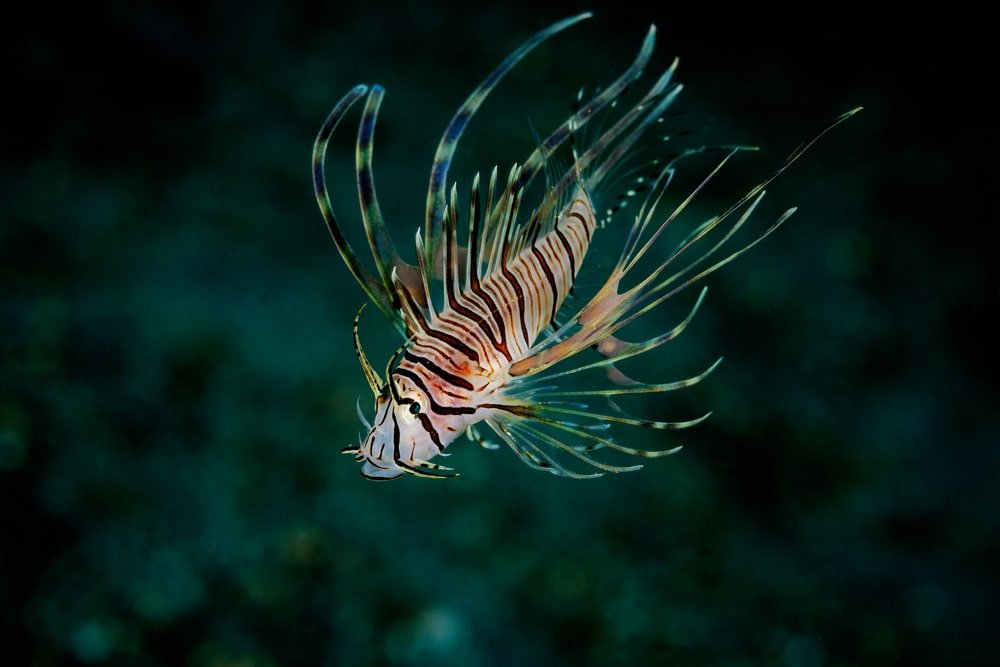The 340-megawatt Therma Visayas power plant, located along Cebu Island’s western shoreline and bordering the Tañon Strait Protected Seascape, invited the Scubasureros to explore its jetty’s waters. The plant sits within the Philippines’ largest marine protected area, covering 534,589 hectares.
When the Scubasureros explored the waters around the Therma Visayas jetty, they were surprised to find a thriving underwater habitat, despite the passage of large cargo ships and the plant’s ongoing operations.
“It was teeming with life, and vibrant with different colors,” recalled Agnes Sabonsolin-Bautista, a marine biologist who joined the dive. “Hiding and swimming … are several species of damselfish, lionfish, batfish, cardinalfish, and nudibranch. The life down there looked pretty healthy.”
The Scubasureros discovered a diverse range of fish, later identified as 56 species from 16 families, inhabiting coral reefs in fair condition. A Marine Biodiversity Assessment by environmental firm Ridge to Reef also noted six seagrass species, 28 phytoplankton genera, and 15 macroinvertebrate species, including the horned sea star found mostly in the mangroves. The coastline is home to 14 different mangrove species.
The Scubasureros are a group of volunteers and marine biologists dedicated to exploring and preserving coastal areas. Their mission includes studying marine ecosystems and leading underwater clean-up initiatives in one of the Philippines’ most biodiverse regions. True to their name, which combines “scuba diving” and “basurero” (garbage collector), they have previously removed over two tons of plastic waste from the Bato Marine Sanctuary seafloor along Cebu’s southeastern cost.
(Also read: Eco-Conscious Tourism Gets a Boost in Bohol)
Protecting underwater life
Marine Biologist and Scubasurero Roxie Diaz expected to collect trash during the dive. “We thought the columns of the jetty would be entangled with a lot of trash,” she shared. “But when we went down, it was the exact opposite. Instead of trash, we found a thriving ecosystem instead.”
The results highlight Therma Visayas’ ongoing efforts to monitor marine biodiversity around its site. The plant adheres to its Environmental Compliance Certificate and follows environmental plans to protect shorelines and waters. Additionally, it organizes frequent beach cleanups with nearby communities, removing over 9,300 kilograms of waste from coastal zones since 2022.
(Also read: DOE Backs 16 Offshore Wind Projects in Western Visayas)
The significance of marine areas
Marine ecosystems are crucial in the Philippines due to their rich biodiversity, which supports livelihoods, food security, and tourism. As an archipelago with extensive coastlines, the country relies on its marine habitats for fishing, coral reef protection, and coastal resources. These ecosystems also play a vital role in climate regulation, mitigating the impacts of storms and rising sea levels. Additionally, they are essential for the health of marine species, contributing to the overall environmental balance.
For Bautista, the Scubasureros’ work is crucial in raising awareness about environmental issues. “It gets people involved in conservation and it nurtures the feeling of protectiveness for the reefs. It also reaches out to non-divers, as they see all the marketing strategies in social media. It makes them want to get involved, seeing the photos and videos underwater,” she said.
Therma Visayas, Inc. (TVI) operates the 340-MW Toledo power plant, utilizing advanced Circulating Fluidized Bed (CFB) technology and Best Available Control Technology (BACT) to reduce coal dust emissions and minimize environmental impact.
Sources:
https://www.facebook.com/philippinedailyinquirer/videos/1172195957597976
https://bilyonaryo.com/2024/12/02/scubasureros-discover-thriving-marine-life-beneath-therma-visayas-jetty/brand-news/
https://malaya.com.ph/anniversary-issues/42nd-anniversary/from-seas-to-trees-aboitizpower-drives-action-toward-biodiversity-protection-and-carbon-sinks


